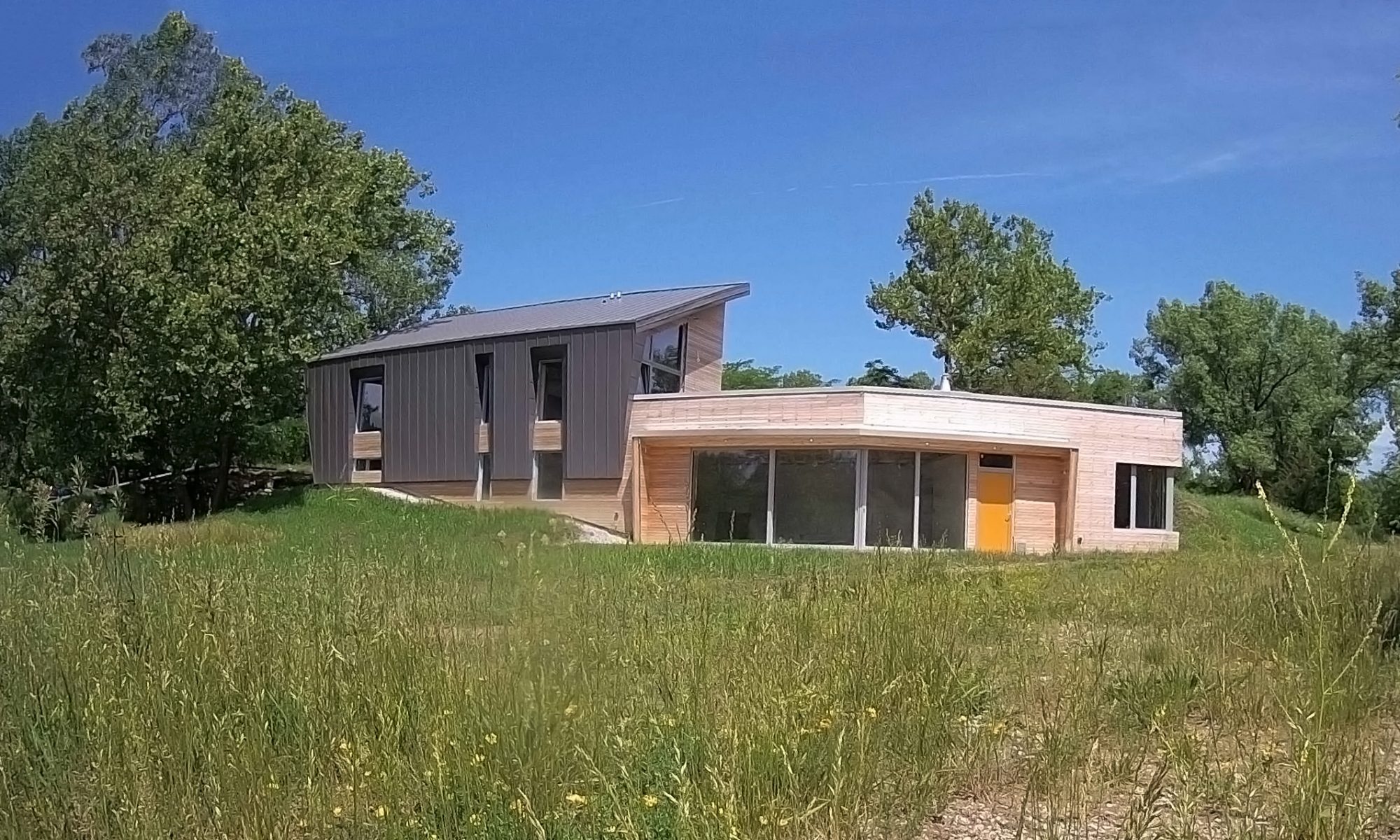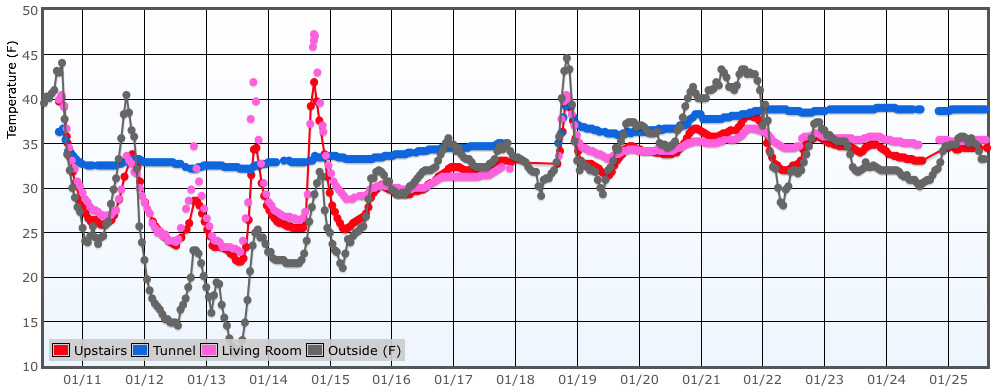We’ve added temperature and humidity sensors to the house in three locations, so we can start to track the home’s actual measured performance. While these sensors will be most useful once the house is complete, the data that’s coming back now is already interesting, and is already showing the effectiveness of the passive design measures.
For those interested, you can track the live data here: http://www.iowanest.com/monitor/
Disclaimers: At the time of this writing (January 2017),
- construction is still underway, so doors are opening and closing frequently (and sometimes left open for long periods);
- window air sealing is still in process (so the envelope is not yet air-tight);
- insulation has not yet been added to the roofs; and
- earth berming is not yet complete.
Even given these conditions, the interior temperature is already staying both more stable and generally warmer than the exterior conditions.
A few observations:
- Earth berming works. The tunnel (most buried) is tracking around 40 deg F — about the same as winter ground temperature, and significantly higher than the low-30’s outside temperature.
- Passive solar is starting to work. We can see temperature spikes during the day in the living room (especially on sunny days), well beyond the outside temperatures — evidence that solar energy is being captured. However, the heat is still lost fairly quickly. Hopefully this decline will be reduced when we add the roof insulation and finish air-sealing the windows.
- Thermal mass works. The temperatures throughout the house are staying more stable than exterior temperatures, with the exception of mid-day spikes in the living room (attributable to solar gain).
- Extreme temperatures are mitigated. In the coldest days tracked so far, when temperatures dipped below 20 deg F (-7 deg C), interior temperatures were at least 10 deg F higher — and, in the case of the tunnel, 20 deg F higher. Again, this is without the roof insulation, air-sealing, and berming complete.
Why is this important? Three reasons: sustainability, cost, and habitability.
Why it Matters: Sustainability
The passive measures and resulting more stable temperatures mean that the house will need to supply very little additional energy to stay warm (and keep cool), and are therefore a key part of getting the house to Net Zero Energy. Every degree that’s met passively is one less degree that has to be made up with mechanical systems.
Why it Matters: Cost
The elimination of extremes is also a key strategy for reducing the cost of mechanical systems. Those systems are typically sized for near-worst-case scenarios — the peak heating or cooling loads. Shave off those peaks, and the required capacity decreases sharply.
Why it Matters: Habitability
What happens when the power goes out for an extended period? Will the building become an icebox in the winter, or a sauna in the summer? Given the impacts of climate change, including increasing frequency of extreme weather events, the likelihood of both power disruptions and extreme temperatures is increasing. In these events, can the building keep its occupants safe, rather than presenting a danger?
This question is at the heart of a LEED pilot credit on Resilience, called Passive Habitability. (Full disclosure: I was on the advisory committee that helped to draft the credit’s technical language.) While this house was mostly designed before the pilot credits were adopted, I incorporated their intent — and if the early results are indicative of final performance, the house should remain an excellent shelter in the case of an extended power disruption. (Incidentally, it’s also an excellent shelter in case of tornados — which touches on hazard planning, another aspect of the resilience credits.)
Once the house in complete, I plan to evaluate its actual performance against the LEED credit requirements, as well as against modeled performance. As always, stay tuned …
You can access the live sensor data here: http://www.iowanest.com/monitor/


This house is amazing. Now that the roof insulation looks like its complete, have you seen improvement in maintaining heat? Also, who made the sensors and monitoring software? We’d like some for our Denver net zero house.
Hi Jay, I just published an update on temperature monitoring that does show improvement: http://www.iowanest.com/index.php/2017/02/22/temperature-sensors-an-update/ … However, the roof insulation is actually not complete yet, so I still expect to see further improvement.
I’ll have one of the owners get back to you regarding the sensors and software — they’ve taken the lead on this and know the details.